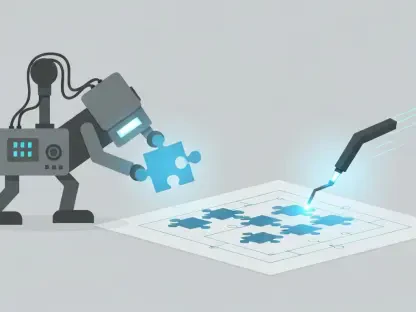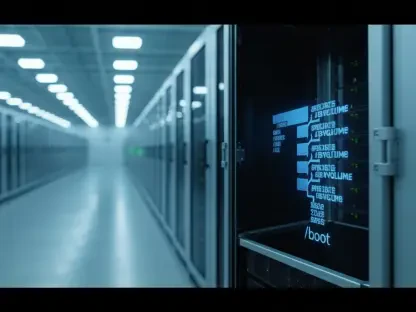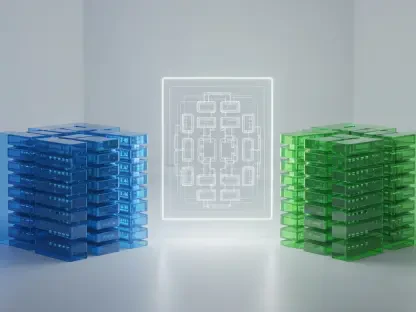Stepping into the tech industry for the first time can be both exhilarating and overwhelming, as theoretical knowledge often collides with the practical demands of a fast-paced work environment. Newcomers frequently find the transition from academia or certification courses to real-life projects particularly challenging. In Agile IT settings, work conditions seldom mirror the structured methodologies taught in classrooms. To thrive, junior tech professionals must understand and bridge this gap, learning to navigate complexities not covered during their academic training.
The Disparity Between Academic Theory and Agile Practices
Understanding the Divide
The divide between academic learning and on-the-job application can be significant, especially when new hires join Agile teams. While certifications provide a foundational understanding of concepts like Scrum or Kanban, they often lack the nuances needed to thrive in dynamic environments. New hires can find themselves unprepared for the organized chaos and fluidity of real-world Agile work. Training simplifies standard methodologies, omitting the messiness and decision-making challenges teams face in daily operations. This disparity often leads to confusion and unmet expectations among new professionals.
Navigating Unpredictable Project Realities
In practice, Agile methodologies are far from rigid frameworks; they require adaptation to the unique challenges of each project. For fresh graduates or those recently certified, the unpredictability of live projects can be a significant shock. Tools and processes may be unconventional, team dynamics fluctuate, and meetings can extend beyond anticipated times. New tech employees must quickly learn to adapt, using classroom knowledge as a flexible guide rather than an unchangeable playbook. By embracing the Agile mindset of flexibility and willingness to pivot when necessary, junior employees can better align their theoretical understanding with practical demands.
Cultivating Flexibility and Seeking Mentorship
The Value of Adaptability
One of the most important skills new professionals can cultivate is adaptability—specifically, the ability to use frameworks as adaptable tools rather than strict rule sets. In Agile environments, methodologies are designed to be iterative, promoting continuous improvement rather than the pursuit of perfection. Junior tech employees should recognize that deviations from standard practice are not failures, but opportunities to learn. Observing variations in Agile application helps new team members refine their approach, allowing them to contribute meaningfully to project development from the outset.
Learning from Experienced Team Members
Mentorship plays a critical role in helping newcomers adjust and excel in their roles. Experienced colleagues, especially those who exude calm leadership and clear communication, provide invaluable real-world insights. Engaging with seasoned professionals allows juniors to gain practical knowledge beyond formal onboarding procedures. Shadowing opportunities, both formal and informal, offer a deeper understanding of task management. These experiences are priceless, enabling entry-level employees to observe effective strategies in action and better understand the subtle dynamics that underpin successful Agile collaborations.
Embracing Communication and Feedback
Effective Communication as a Core Competency
Effective communication stands out as an essential skill for anyone entering the tech industry. For new hires, clarity and openness facilitate smooth team interactions, a vital component in Agile workspaces where project success hinges on collaboration. Communicating progress, challenges, and needs with honesty can help prevent misunderstandings and ensure that the team stays aligned with project goals. Being upfront and seeking clarity are not signs of weakness but indicators of reliability and accountability, valued traits that can accelerate professional growth in the tech sphere.
Feedback: A Tool for Continuous Improvement
Feedback is a cornerstone of personal and professional development, especially for those embarking on their tech careers. For new employees in Agile settings, viewing feedback not as criticism but as constructive guidance fosters a culture of continuous learning. By understanding the tone and intention behind feedback, juniors can address their developmental areas with a growth-oriented mindset. When approached proactively, feedback enables new tech workers to enhance their skills more effectively, driving improvements that align with both personal career goals and team objectives.
Encompassing Roles and Beyond Primary Duties
Expectations Beyond Core Responsibilities
While specific job roles may define key responsibilities, professionals in the tech industry often find themselves performing a broad range of duties. This broader role encompasses everything from clear documentation and risk assessment to contributing innovative solutions in team discussions. Newcomers should be prepared to engage in activities beyond their primary job descriptions, demonstrating a holistic understanding of their contributions to the team’s success. Such involvement also showcases a willingness to integrate into diverse aspects of project execution, reflecting a proactive mindset valuable in any Agile setting.
Building and Navigating Team Dynamics
Successful integration into a tech environment extends beyond technical acumen; it also involves understanding and contributing to team dynamics. As juniors navigate their entry into Agile teams, recognizing the strategic importance of user stories and ensuring effective communication flows can bolster team cohesion. Building trust through reliability and collaboration supports collective productivity, highlighting the importance of interpersonal skills in achieving long-term career success.
Embracing Continuous Learning and Growth
Entering the tech industry for the first time is an adventure filled with excitement and challenges. The shift from theoretical knowledge to the practical demands of a tech career can be daunting. Many find moving from the structured environment of classrooms or certification programs to the fast-paced, ever-changing landscape of real-world projects to be a significant hurdle. In Agile IT environments, the work dynamics rarely reflect the orderly methods taught in academic settings. This disparity often leaves junior tech professionals grappling with a steep learning curve. To succeed, new tech workers need to grasp and bridge this gap, developing the skills to maneuver through complexities not addressed in their academic curricula. Embracing flexibility, continuous learning, and adaptability becomes crucial in this process. Being open to feedback, seeking mentorship, and participating in hands-on projects can also aid new professionals in thriving despite the myriad of challenges they might face in the tech workplace.









